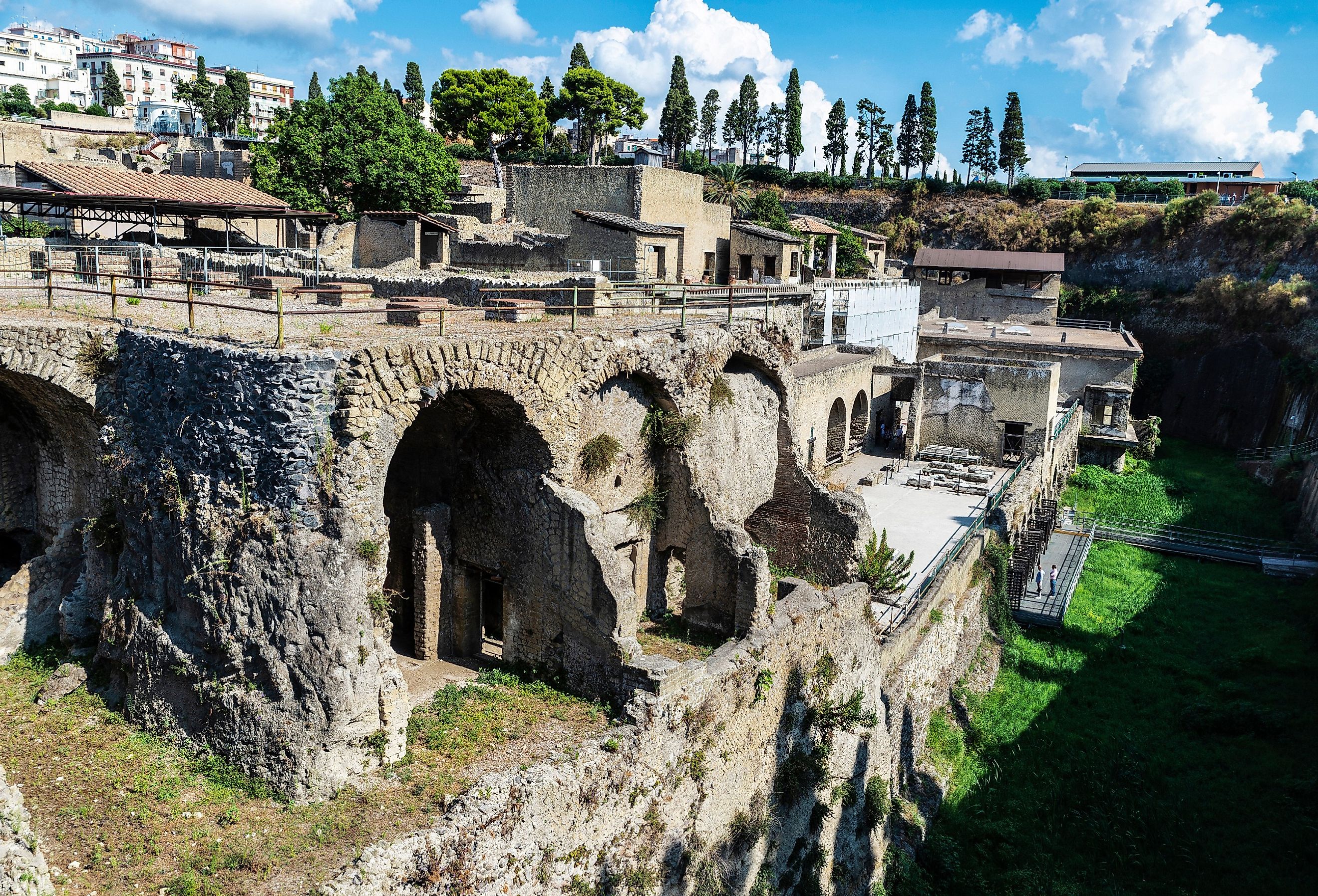
15 Incredible Ancient Ruins Around the World You Must Visit
There are countless incredible ruins around the world, from the earliest dwellings of hunter-gatherer families to the fortified castles of far-reaching empires. Whenever ruins are of unique importance to human history and heritage, they become World Heritage Sites of The United Nations Educational, Scientific and Cultural Organization (UNESCO). This means that by international treaty, these sites belong to all the people of the world rather than to whichever specific country they are in. These must-visit UNESCO Heritage sites are among the oldest or most extraordinary ruins in the world. They all offer unique experiences for visitors and priceless information about the ancient societies that built them.
1. Ajanta Caves, India
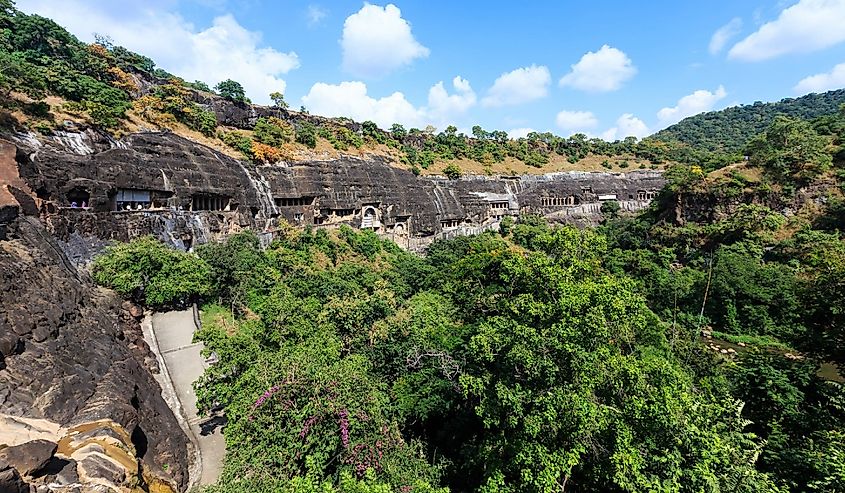
For over 800 years, the Ajanta Caves, carved out of a cliff in Maharashtra, India, were home to a long line of Buddhist monks. Beginning around 200 BCE and up until around 600 CE, the monks excavated and decorated almost thirty caves of different sizes to serve as sanctuaries for worship or cells for the monks. The caves are now considered to be masterpieces of such architecture and a unique opportunity to see the changes in Buddhist philosophy reflected in the art and sculpture in one place over a long period of time.
The monasteries consist of gathering spaces with cells for the monks on three sides. The first caves, excavated by Hinayana/Theravada followers, were sparsely decorated with vaulted ceilings, horseshoe-shaped windows, and colonnades to divide the space in order to move around a rock-hewn chaitya or stupa in the center. Hundreds of years later, a second phase of carving took place by Mahayana followers, with the creation of new caves and further embellishments such as tempera murals, pillars, shrines, and sculptural facades.
2. Al-Hijr (Hegra), Saudi Arabia
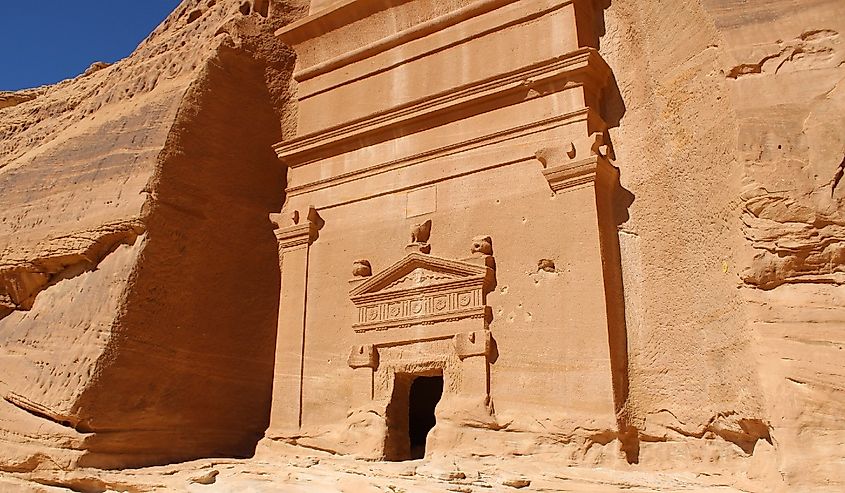
The site of colossal structures at Al-Hijr (also known as Hegra) in Saudi Arabia is the remarkably well-preserved cousin of the mega-popular tourist site Petra in Jordan. Starting around 300 BCE, entire buildings and temples were carved out of single rocky outcroppings. Al-Hijr is the largest such site, next to Petra, and has revealed over 100 tombs of the Nabatean people, most of which are beautifully decorated. The tombs span from approximately 100 BCE to 100 CE, but the habitation of the site dates back even earlier, as shown by the many inscriptions and cave drawings.
Strategically positioned where the Arabian Peninsula meets the Mediterranean world and Asia, the Nabateans made a fortune trading with the other great civilizations of their time. The influence of these on the architecture is plain to see, as symbols popular in Assyrian, Egyptian, Phoenician, and Hellenistic cultures are also found here, including griffins, sphinxes, and Medusas. These ruins are also unmatched in the amazing hydraulic systems of the pre-Islamic Nabataean civilization. The management of rainwater was crucial to sustaining and feeding the local population. They collected and stored rainwater in cisterns and used pipes to protect areas like tombs, leading to phenomenal preservation.
3. Çatalhöyük, Turkey
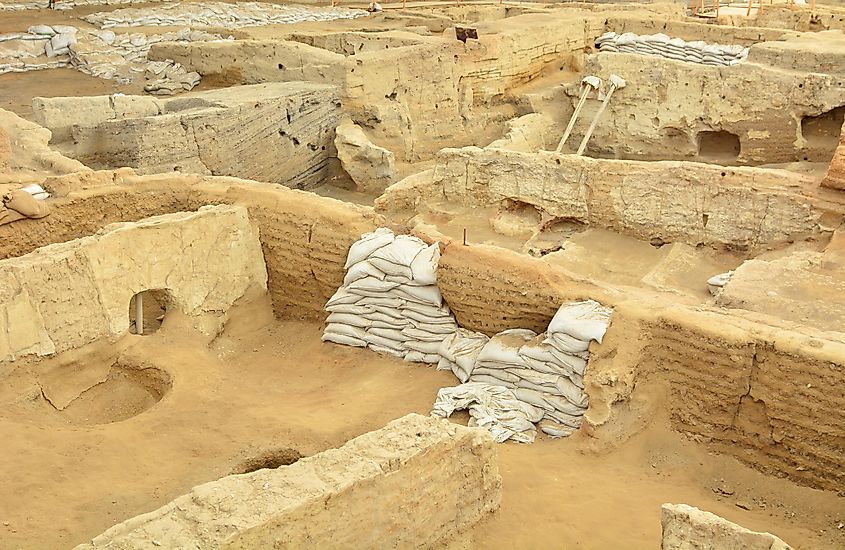
This 90-acre site on the Southern Anatolian Plateau in Turkey is one of the only places in the world where researchers and visitors can see the transition from village to city play out through the differences in structures over a span of some 2,000 years. Moreover, it is one of the most important examples of an early agricultural city in the world. The site comprises two hills. The ruins on the eastern side date from 7400 to 6200 BCE, otherwise known as the Neolithic Age. Later builds on the western side date from 6200 to 5200 BCE, or the Chalcolithic Age.
Çatalhöyük is unique in that there are no roads in the settlement, with access to all of the building's share walls from the roofs. This, along with aligning the site to the cardinal directions, indicates a larger plan was in place before and during construction. There are suggestions of symbolic and idealistic nature to this, as evidenced by the site's burials and paintings, which indicate a community that was consciously egalitarian. They made a point of ensuring that there was not much difference in wealth, power, or prestige among the inhabitants.
4. Chavín de Huántar, Peru
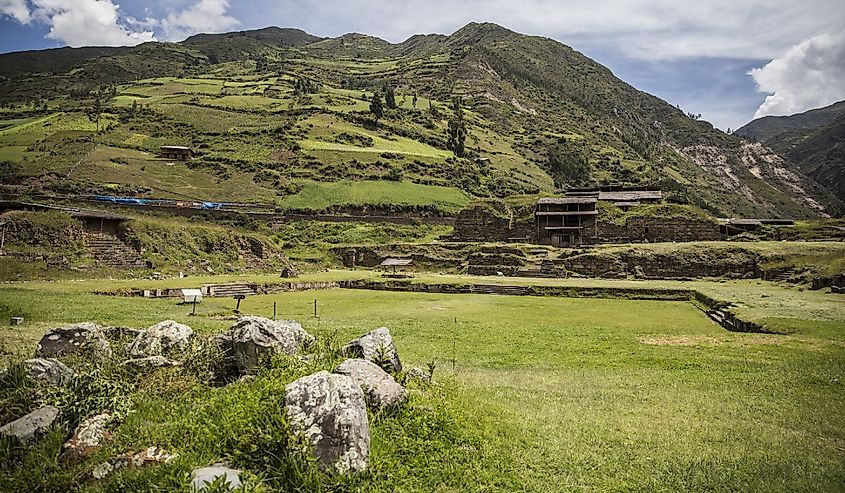
The Chavin de Huantar archeological site high in the Andes Mountains of Peru is the ruins of a ceremonial center for what is now called the Chavin culture and hosted people from great distances. The Chavin culture spread through the Peruvian Andes along the coast. Active from 1500 to 300 BCE, the ruins at Chavin predate the Inca and features the first system of vents and drains so far found in South America and a complex of terraces, squares, and buildings with otherworldly carvings of people and animals decorations, stone sculptures, and bas-relief columns. Spectacular builds include the Circular Plaza, the Falconidae Portico, the Raimondi Stela, and the Tello Obelisk.
5. Choirokoitia, Cyprus
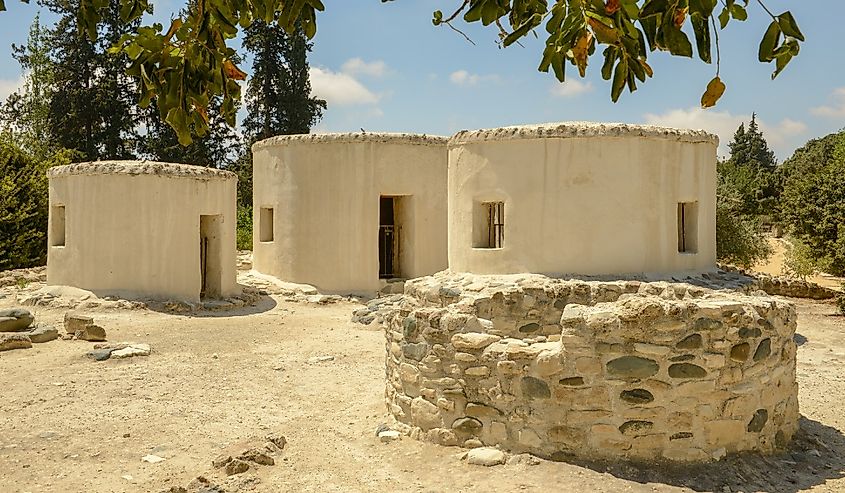
A glimpse of life before cities can be found at Choirokoitia on the island of Cyprus in the Mediterranean. Inhabited from around 7000 to 3000 BCE, it is also an important site in understanding the spread of culture and ideas between Europe and the Near East. Houses in this small walled settlement were circular mudbrick buildings with flat roofs placed around a courtyard in which daily family activities would take place.
Archeologists have only excavated part of the site, but they have pieced together hints of the everyday lives of the inhabitants. These included remains of the food they ate, flint and bone tools they used, and stone vessels they used. In addition to clues to their dietary practices, further finds of stone anthropomorphic figurines, as well as funerary practices that included interring their dead beneath the floors of their settlements, indicate the people here already had complex beliefs about life and death.
6. Dengfeng, China
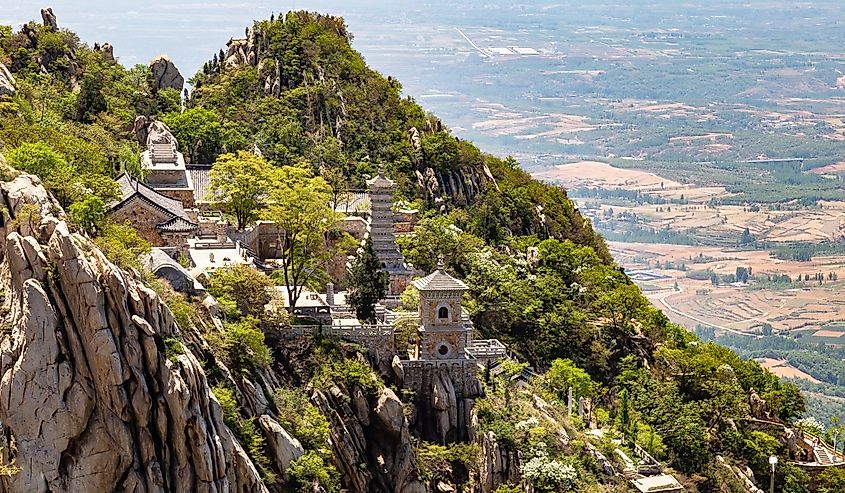
The ruins of Dengfeng are the remnants of the oldest religious structures in the country. Sitting at the base of the venerated Mount Songshang in the Henan province of China, along with more mundane neighbors, they are a testament to nine dynasties of Emperors that ruled for over 1500 years.
The mountain itself was seen as the literal center of "heaven and earth" and the source of imperial authority for Chinese and Buddhist society. As the center of everything, it was also considered to be the only place for accurate astronomical observations and the home to a large observatory and sundial platform. Visitors to the site also marvel at the freestanding Han Que gates and bright-red temples.
7. Dholavira, India
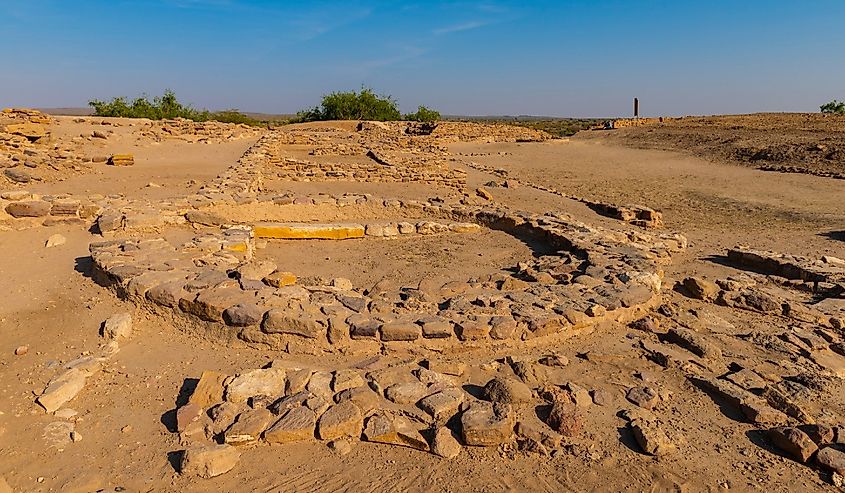
In India’s Gujarat state, on a lake near the western coast of India, the island of Khadir is home to the ruins of the ancient walled city of Dholavira. Capital of the Harappan Civilization, there are ruins of a castle, ceremonial ground, and cemetery with large cenotaphs dating from around 3000 to around 1500 BCE. Life on the island depended on the management of two seasonal streams, and so the city built and maintained a sophisticated system to manage the water.
The layout of the city shows that there was a stratified social order where certain citizens had more power and were much better off than others. There were also a number of bead workshops and a large number of jewelry and items of gold, copper, and gems in the city. Many of the artifacts found there were from elsewhere in the Harappan civilization as well as farther away in other parts of Mesopotamia, so its clear trade was common and important.
8. Dolmen Monuments, Korea
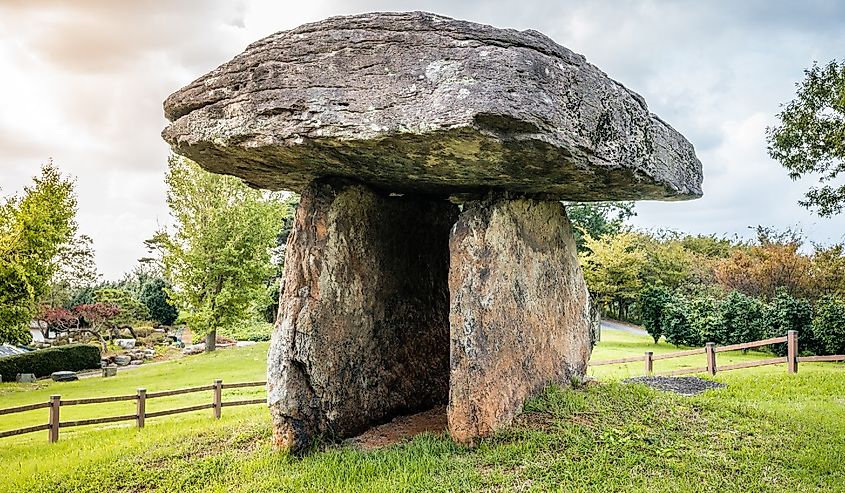
Simple monuments of massive stones, known as dolmen, are found all over the world, but nowhere are there as many in one area, than at the sites in Korea called Gochang, Hwasun, and Ganghwa. As is the case elsewhere, these dolmen, or tombs, date to around 2000 to 1000 BCE, constructed from two huge stone boulders–megaliths–with a third one on top as a capstone.
The ruins at these three sites are of slightly different types, with the earliest on the mountain of the island of Ganghwa, and later ones, numbering in the hundreds, at Gochang and Hwasun. Because these sites are so large and close together, and the monuments are so varied, the area as a whole is the best place to see how the building of these dolmen changed over time.
9. Gebel Barkal, Sudan
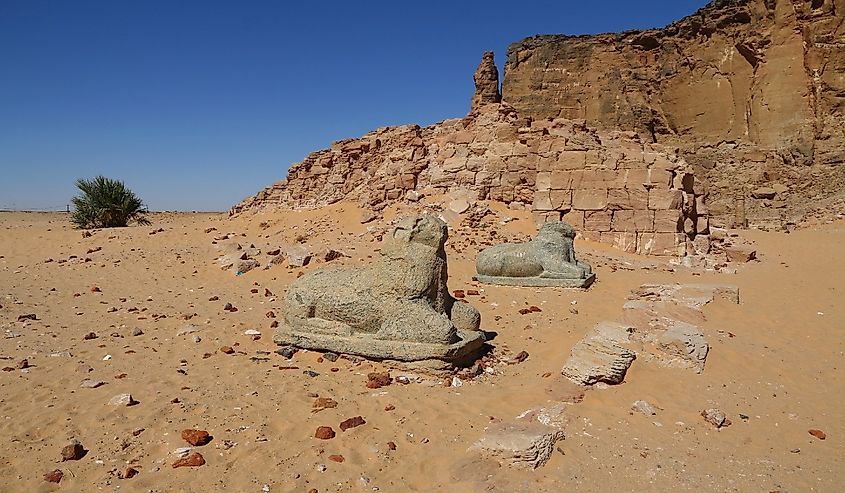
Gebel Barkal is one of five sets of little-known ruins along both sides of the Nile River in Sudan. The others are Kurru, Nuri, Sanam and Zuma. Covering more than 37 miles (60 km) along the Nile, they include tombs, pyramids, and palaces dating between 900 BCE and 350 CE and so date both the Napatan and Meroitic cultures.
The Napatan-Meroitic (Kushite) civilization lasted for these 1,250 years, was extremely powerful, and had strong links to the infamous Pharaohs to the north. Gebel Barkal itself has been considered a sacred mountain since at least 1500 BCE, as the Egyptians believed it was the home of the God Amon. It is still a sacred site today, as the resting place of Gebel Wad el-Karsani, a Muslim sheik.
10. Herculaneum, Italy
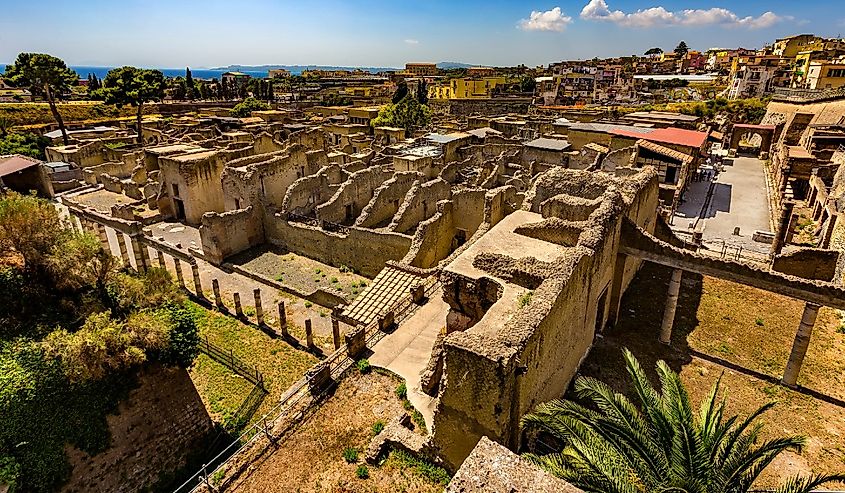
In Italy, there is a ruined city often overlooked by travelers heading to the ruins of Pompeii. Also destroyed by the eruption of Mount Vesuvius in 79 CE, the ruins at Herculaneum contain remains in an unmatched state of preservation anywhere. It was a resort town with paved streets, two sets of public baths, a theater, a prestigious wrestling school, the College of the Priests of Augustus, and the opulent Villa of the Papyri.
The pyroclastic material of the eruption exposed the upper floors of these buildings to temperatures high enough to carbonize a lot of the organic matter present, preserving items that normally decay. This means that there are shops frozen in time with food, equipment, decorations, and wooden furniture. Hundreds of wax tablets and thousands of papyri scrolls have also been uncovered. Further, there are hundreds of remains of people who did not survive the eruption, leading to a chance to discover more about life at this time.
11. The Megalithic Temples, Malta
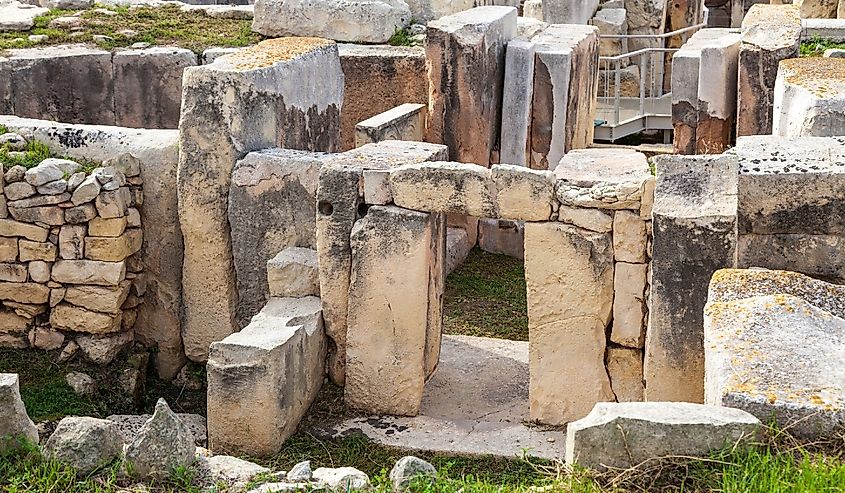
On the island of Malta, in the Mediterranean Sea, are several megaliths–massive stone structures–that were once temples. They are the sites of Tarxien, Ta’ Ħaġrat, Skorba, Mnajdra, Ħaġar Qim, and, perhaps most famously, Ggantija.
All dating to about 3000 to 2000 BCE, they are some of the earliest examples of freestanding stone buildings anywhere in the world. They are also evidence of a stunning level of artistic and technological abilities. Each site is unique, but there are many commonalities in their overall construction. The temples tend to be symmetrical in layout, with similarly shaped forecourts and facades. Their entryways comprise of two huge rectangular stone blocks topped with a horizontal one. Inside there are equally large passageways, paved courts, semi-circular chambers known as apses, and arched roofs. They are also highly decorated with bas-relief panels of spirals, animals, and plants.
12. Mesa Verde, United States of America
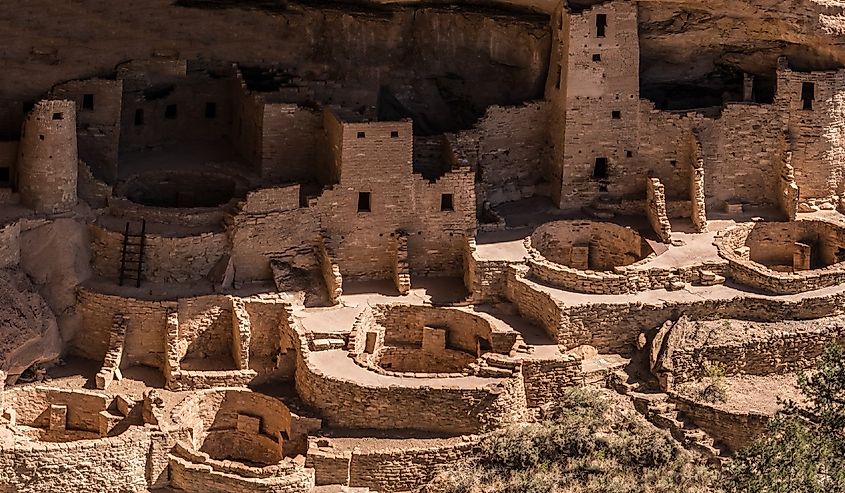
The ancestral Pueblo constructions in the area of the Mesa Verde plateau in the US State of Colorado are among the most famous and spectacular ruins in North America. Built from 600 to 1200 CE, the most famous are the 600 cliff dwellings built of sandstone and mud mortar within the mesa itself. They range from 50 to 200 rooms and include multi-story builds like the Balcony House, Cliff Palace, and Square Tower House.
On top of this mesa, as well as others in the area, are more than 4,400 total sites of different types, including rock art, shrines, terrace farms, dams, reservoirs, pit houses, and walled villages. It is a unique place to view the deep past of the Pueblo people in this part of the world.
13. Monte Albán, Mexico
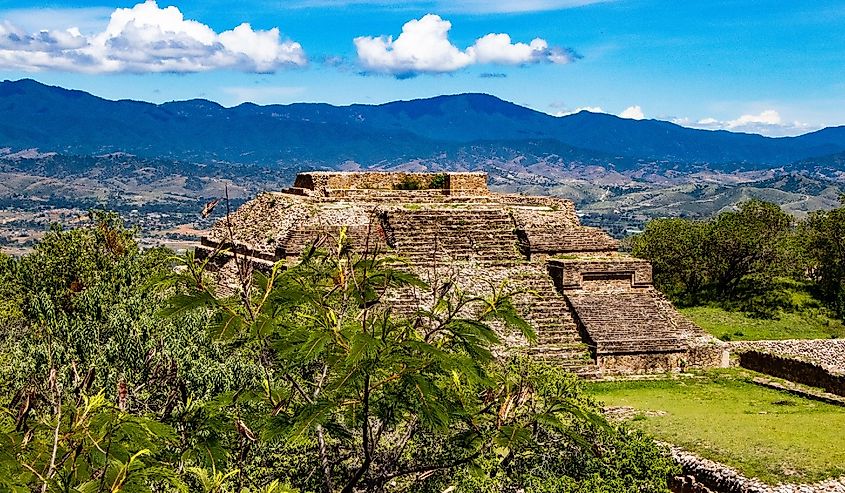
Monte Albán is an archeological site in the Valley of Oaxaca in Mexico, just outside of Oaxaca City. Once a city and major ceremonial center, its many features were dug out of living rock with a master plan that aligned the buildings on a north-south axis. There are remnants of temple mounds and pyramids, tombs, bas-relief hieroglyphics, terraces, canals, dams, fortifications, a ball court, and a 300-meter esplanade.
The first civilization archaeologists have found evidence of are the Olmecs, but over the next 1,500 years, it was subsequently home to the Zapotecs and Mixtecs, meaning habitation lasted through the pre-Classic and Classic periods of the area. The longest inhabitants were the Zapotecs, who were present from approximately 500 BCE to 850 CE and for whom the site was a major capital city. Each society that lived at the site adapted it to their changing needs. Out of the hundreds of similar sites from this time, Monte Albán is the best place to see these different stages and changes.
14. Stonehenge and Avebury, England
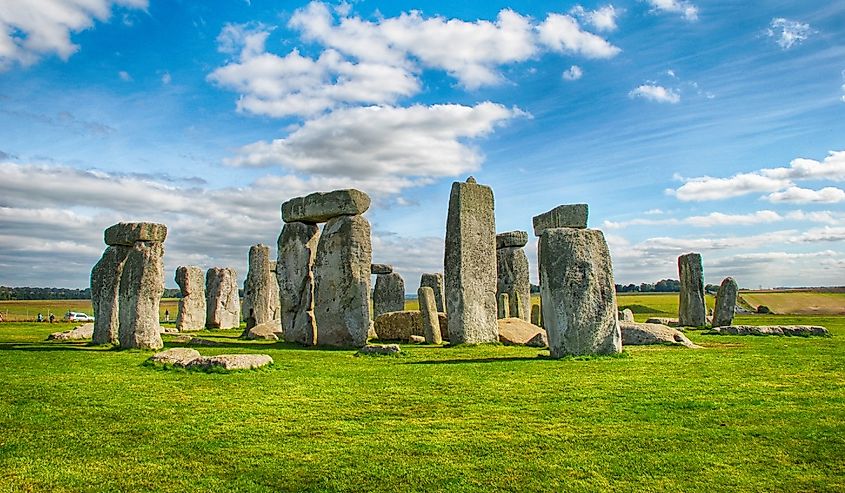
When it comes to ruins, few are as enigmatic as the architecturally-sophisticated megaliths of Stonehenge and Avebury in southern England. Both sites are some of the most famous stone circles in the world. However, despite a long history of study, their astronomical connections are still incompletely understood. Avebury, though slightly less well-known, is the largest stone circle in the world, with a henge stone circle at 0.8 miles (1.3 km) across.
There are numerous impressive structures at both of these sites, in addition to the world-famous massive standing stones. At the Stonehenge site, these include a large number of burial mounds, as well as Woodhenge, Cursus, and the Durrington Walls. Similarly, at Avebury, there are many important barrows and avenues, including the Sanctuary and the West Kennet Palisade Enclosures.
15. Thebes, Egypt
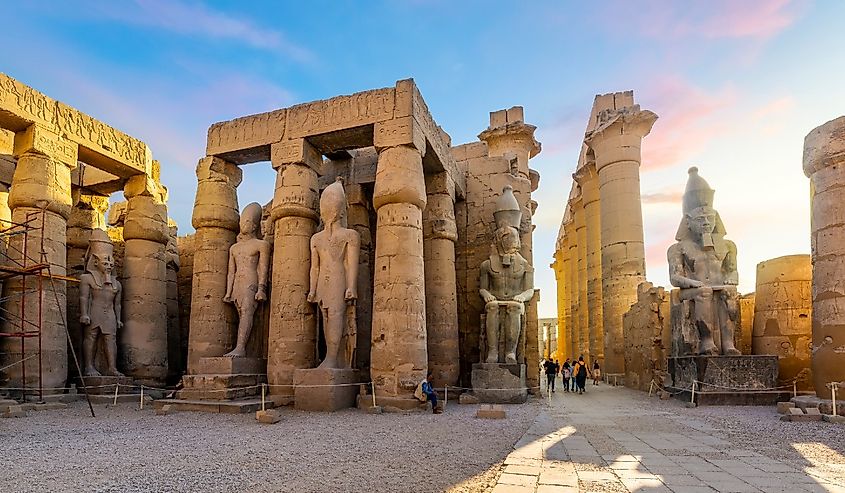
In the modern city of Luxor, Egypt, lie the ruins of the ancient city of Thebes. The city of the god Amun, it was the capital of Egypt for parts of the Middle Kingdom (2040-1750 BCE) and New Kingdom (1550-1070BCE) eras. It was home to the massive Karnak and Luxor religious complexes, enormous monuments such as the 90-foot-tall (27.5-meters) obelisk towers of Queen Hatshepsut, and the world-famous treasure-laden burials in the Valley of the Kings and Valley of the Queens.
The Valley of the King features complex underground burial structures filled with royal goods pharaohs might need in the afterlife. The most famous of these is the tomb of Tutankhamun, discovered in 1922. Meanwhile, the Valley of the Queens contains almost 100 tombs of queens and other royals and nobles. Both valleys have been looted over the millennia, but work continues to find and preserve any ruins that remain.
These must-see sites are not all necessarily the grandest or busiest — though some are — but they are all exceptional in their age or the information they can share about the collective social heritage. Thankfully, now that they are on the UNESCO heritage list, there is added pressure, tools, resources, and support to ensure their preservation from the elements and encroaching development.











